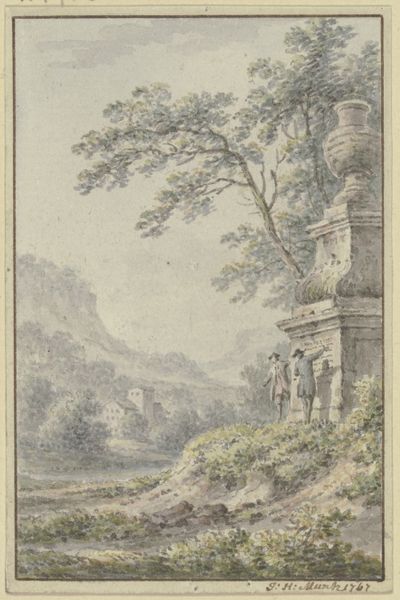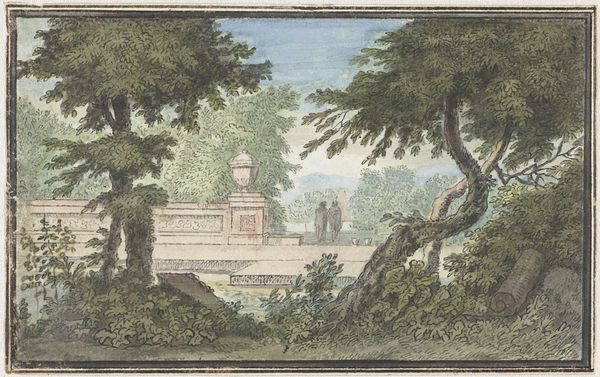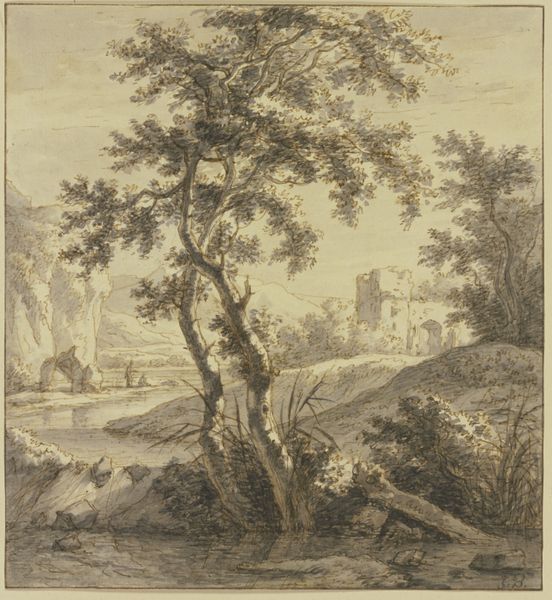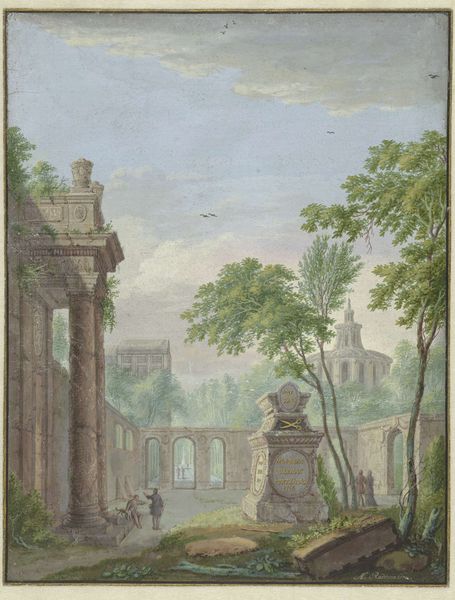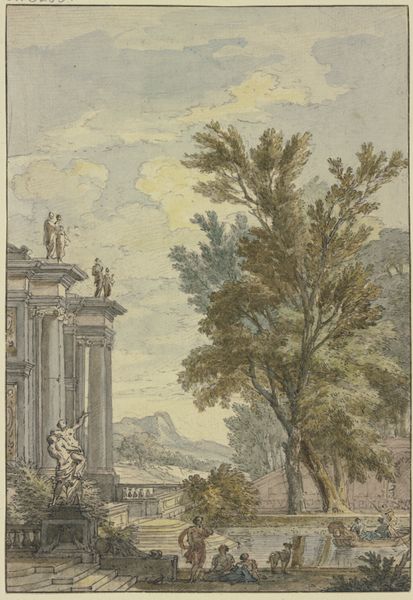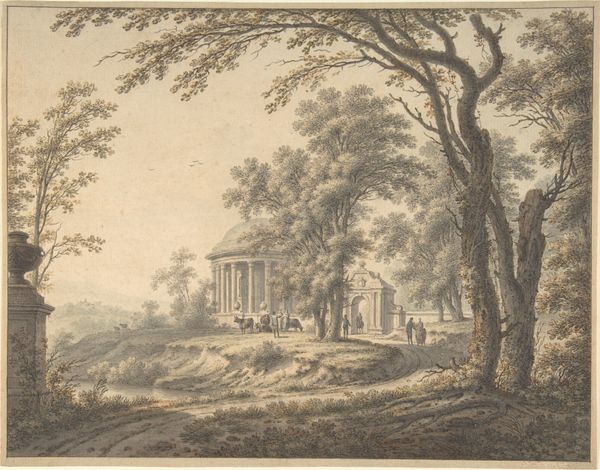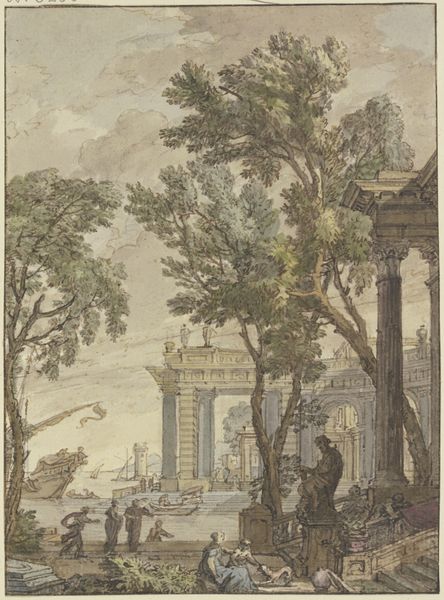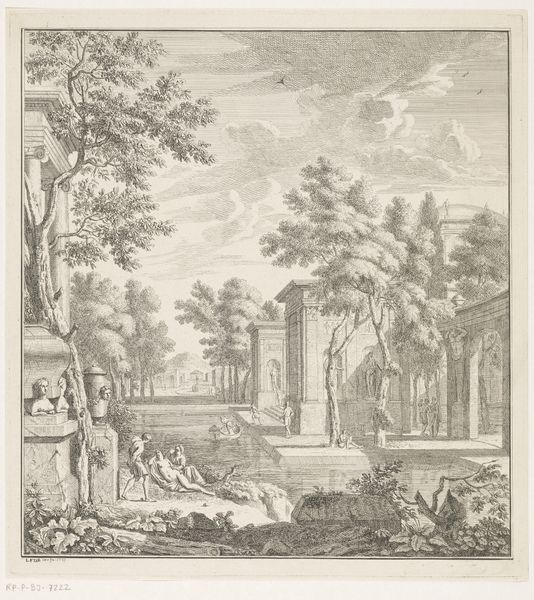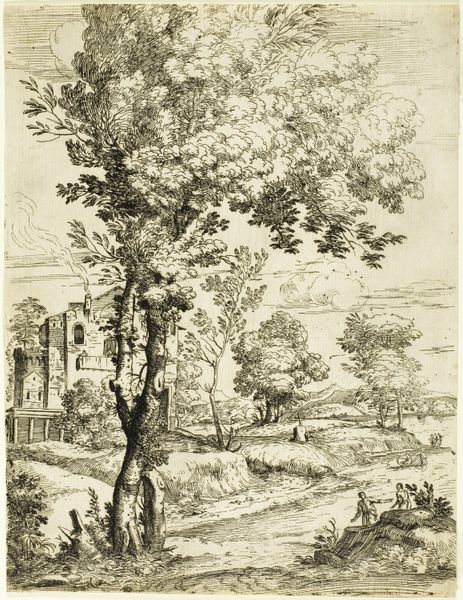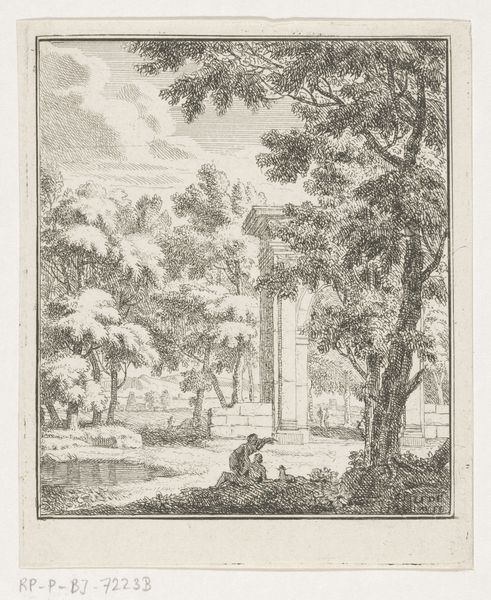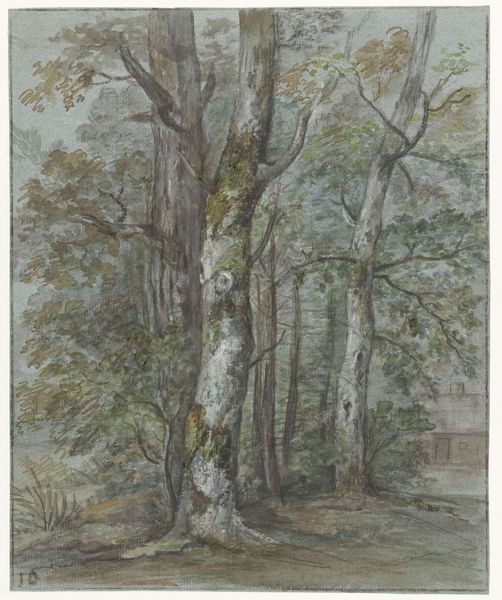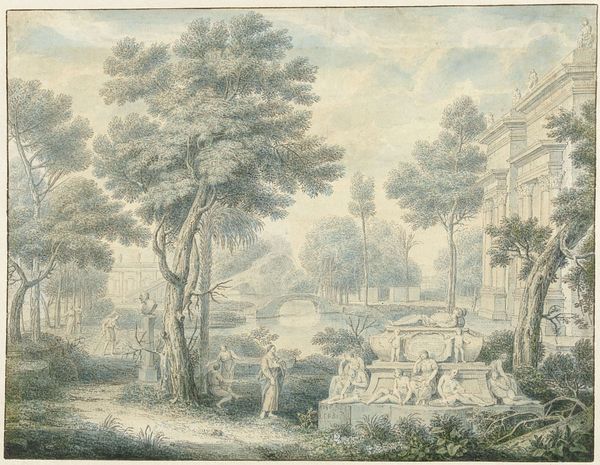
Ontwerp voor kamerbeschildering met landschap met fragment van antiek bouwwerk 1700 - 1800
0:00
0:00
drawing, watercolor, pencil, architecture
#
drawing
#
neoclacissism
#
landscape
#
classical-realism
#
watercolor
#
coloured pencil
#
pencil
#
watercolour illustration
#
architecture
Dimensions: height 252 mm, width 197 mm
Copyright: Rijks Museum: Open Domain
Editor: Here we have an artwork titled "Ontwerp voor kamerbeschildering met landschap met fragment van antiek bouwwerk", or "Design for a room painting with a landscape with a fragment of ancient structure". It was created sometime between 1700 and 1800 using pencil, watercolor, and coloured pencil, it has an oddly tranquil, dream-like quality. What do you see in this piece? Curator: What strikes me is how this seemingly innocuous landscape design encapsulates a very specific power dynamic. The embrace of classical motifs during this period was never simply about aesthetics. These architectural fragments—the columns particularly—evoke a romanticized past, a golden age used to legitimize contemporary social hierarchies. Editor: So, you're saying it's more than just a pretty picture? Curator: Absolutely. Consider the context: the 18th century was a period of burgeoning colonialism and nascent capitalism. The elite were appropriating these classical symbols to construct a narrative of themselves as rightful inheritors of power, suggesting a natural, even divinely ordained, social order. How does that resonate with your understanding of Neoclassicism? Editor: That's a really interesting point. I'd always thought of Neoclassicism as a purely artistic movement, focused on symmetry and balance. I never really considered its connection to power structures. Curator: Exactly. It is through this critical lens that we begin to question whose stories are being told, and for what purpose. By showcasing the grandeur of the past, were they not simultaneously erasing the histories and experiences of marginalized communities? Editor: Wow, that really gives me something to think about. I never would have looked at a landscape drawing and considered that before. Curator: And hopefully, this work encourages us to question how similar mechanisms operate today through design and art.
Comments
No comments
Be the first to comment and join the conversation on the ultimate creative platform.
